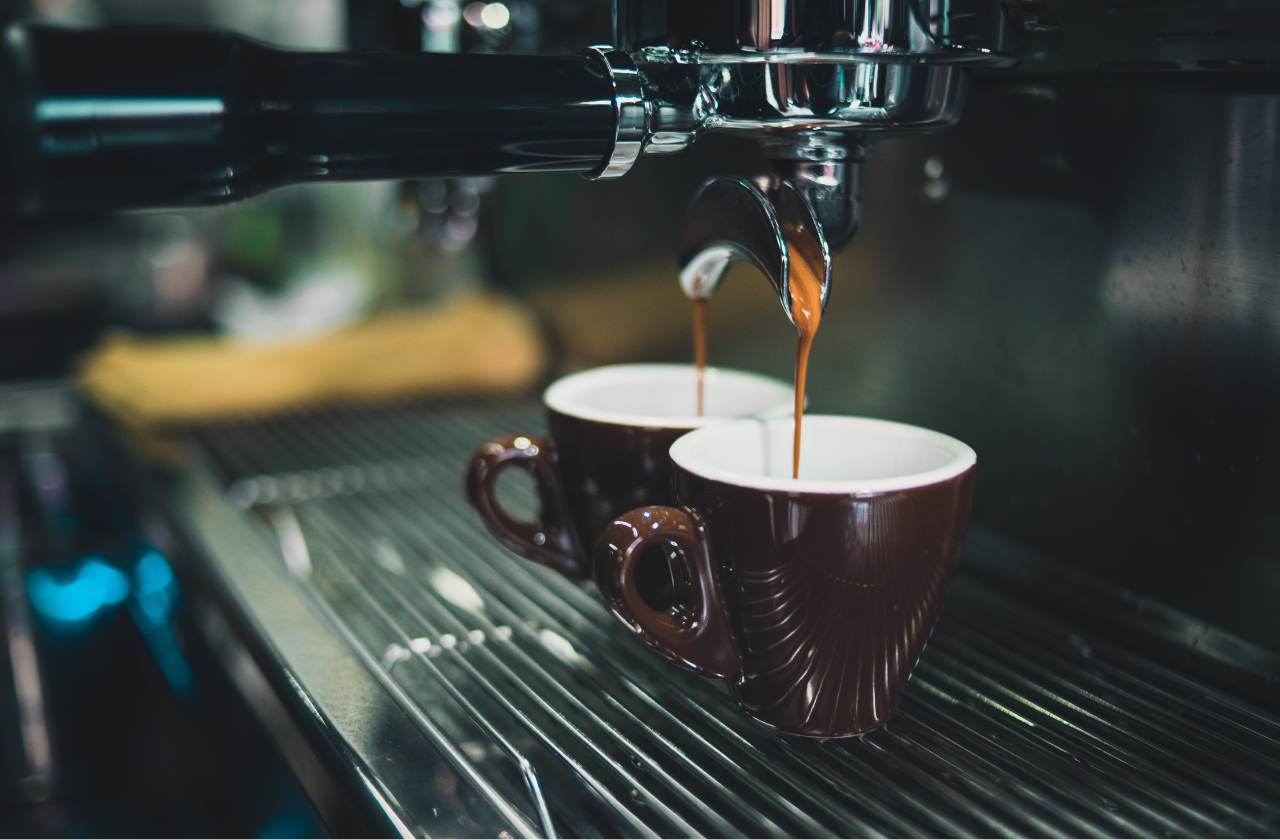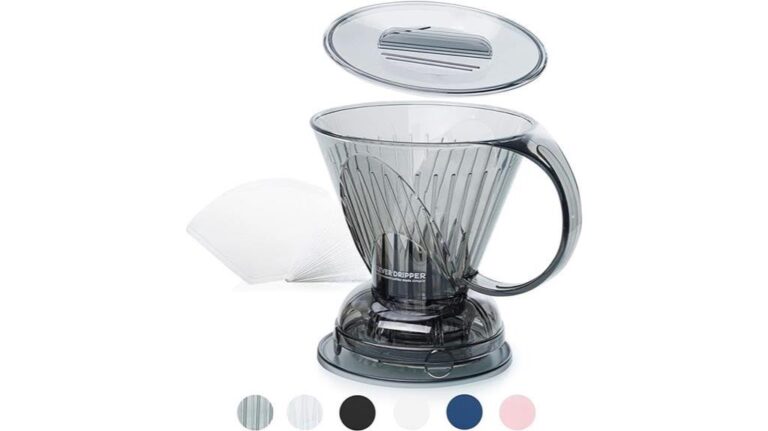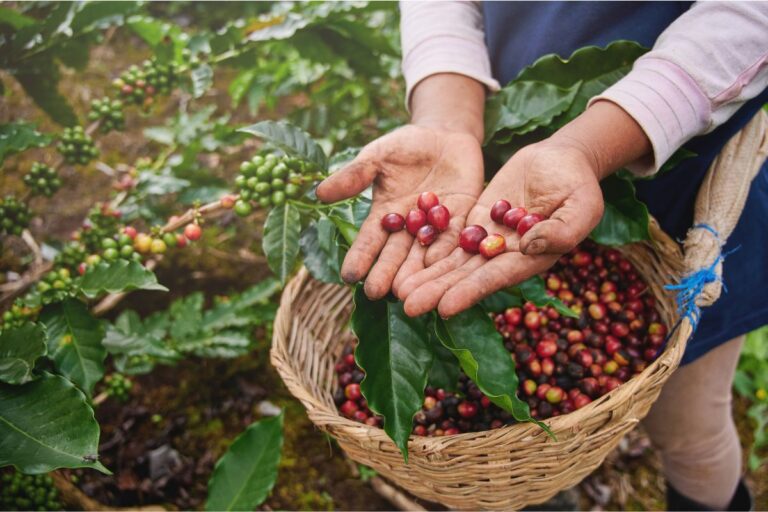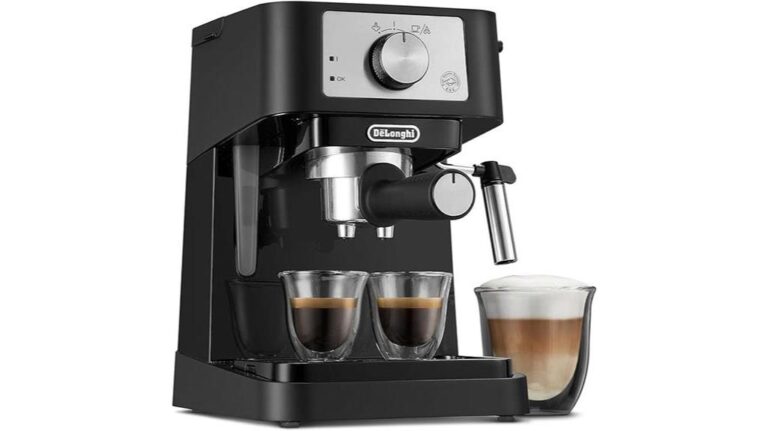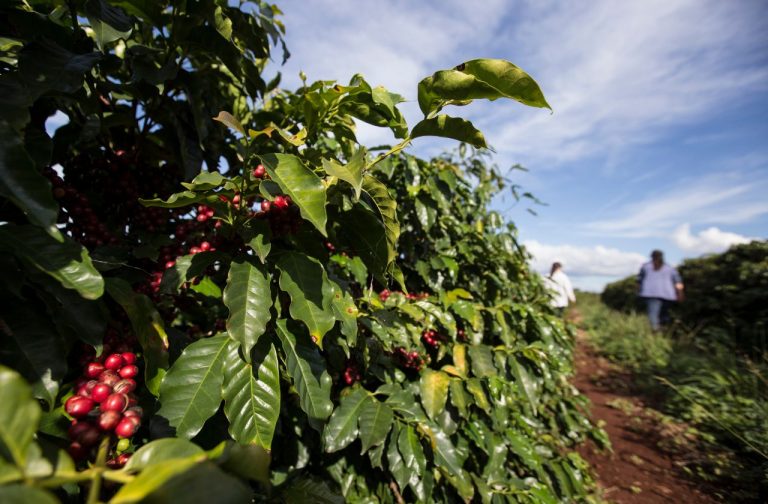60 Facts About Espresso
Espresso is a cultural icon that encapsulates a rich history and an art form deeply rooted in tradition. Originating from the vibrant cafes of Italy, it has evolved into a global symbol of culinary sophistication and innovation.
Whether you’re a coffee connoisseur or a curious newcomer, these insights offer a deeper appreciation for espresso, transcending its identity as a mere drink to become a rich, sensory experience.
1. Espresso Was Invented in Italy
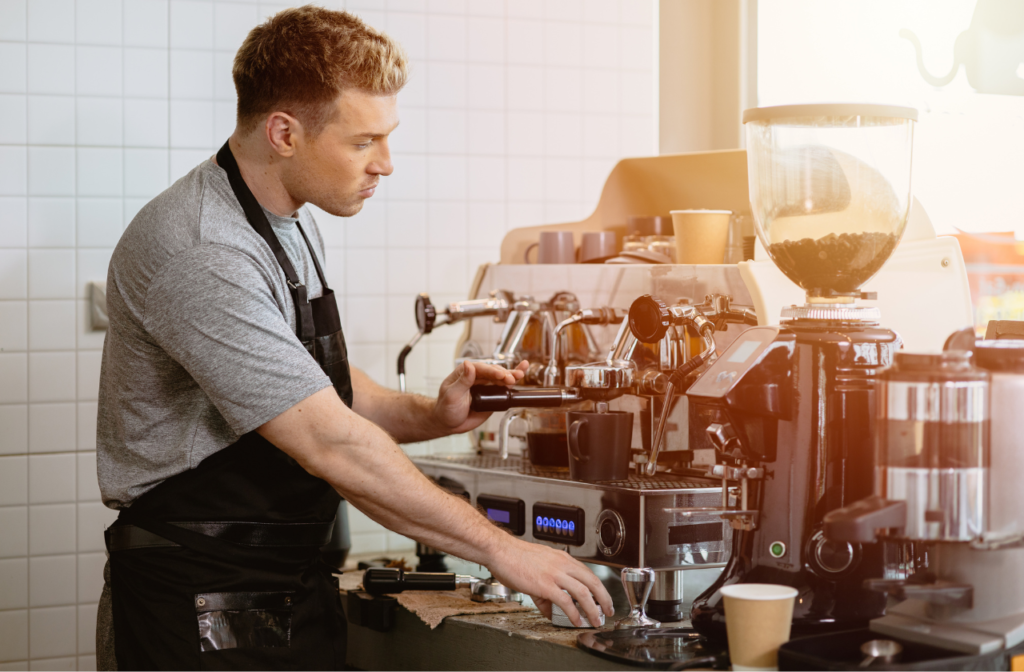
Espresso’s journey began in Italy, the country synonymous with this rich and robust coffee. In the early 20th century, Italian inventors sought to brew coffee much faster and developed the first espresso machines.
These machines used steam pressure to force hot water through finely ground coffee, resulting in a concentrated and flavorful shot, marking a significant departure from traditional coffee brewing methods.
Weird Coffee Tip: Espresso can be made in multiple forms, including lungo, which is a longer shot, and ristretto, which is a shorter and more condensed shot. To learn more about espresso and ristretto, take a look at this article:
Espresso Vs. Ristretto
2. The First Espresso Machine Debuted in the Early 20th Century
The espresso machine was a revolutionary invention, debuting in Italy in the early 1900s. Created by Luigi Bezzera, the machine was initially a bulky and steam-driven device.
This innovation was designed to meet the demand for quick coffee in Italian cafes and changed the way coffee was consumed, laying the groundwork for the modern espresso culture.
3. Espresso Machines Have Evolved Significantly Since Their Invention
Since their inception, espresso machines have undergone substantial evolution. From the initial steam-powered models, they’ve transitioned to more efficient and precise mechanisms, like the piston-driven machines introduced in the 1940s and, eventually, to the sophisticated electronic machines we see today.
These advancements have improved not only the efficiency of espresso brewing but also the quality and consistency of the espresso shot.
4. Espresso Gained Global Popularity Post World War II
Espresso began to spread beyond Italy and gained global popularity after World War II. American soldiers returning from Italy had developed a taste for this strong coffee and introduced it in the United States.
This sparked a worldwide espresso boom, leading to the opening of espresso bars and cafes across the globe, making espresso a global phenomenon.
5. Espresso Machines Consist of Several Key Components
An espresso machine is a marvel of engineering consisting of several key components. The most crucial include the boiler, which heats the water; the portafilter, which holds the coffee grounds; the group head, where water meets coffee; and the steam wand, used for steaming milk. Each component plays a vital role in ensuring the extraction of a perfect espresso shot.
6. Optimal Espresso Extraction Requires Precise Pressure Control
One of the critical factors in brewing espresso is the control of pressure. Optimal espresso extraction happens at around 9 bars of pressure, which forces hot water through the finely-ground coffee.
This pressure is essential for creating the espresso’s signature crema, the creamy foam on top of the shot, and for extracting the full range of flavors from the coffee beans.
7. The Water Temperature is Crucial for Perfect Espresso
Water temperature is another crucial element in brewing espresso. The ideal temperature range for extracting espresso is between 90 to 96 degrees Celsius (195 to 205 degrees Fahrenheit). This range is hot enough to extract the flavors and oils from the coffee but not so hot as to burn the grounds, which can result in a bitter taste.
8. There Are Various Types of Espresso Machines
Espresso machines come in various types, each with its unique method of brewing. The main categories include manual lever machines, which offer barista total control; semi-automatic machines, which automate water pressure; automatic machines, which control both water and pressure; and super-automatic machines, which grind, tamp, and brew the espresso with minimal human intervention.
9. Machine Type Influences the Flavor of Espresso
The type of espresso machine used can significantly influence the flavor of the espresso. Manual machines, for instance, allow for a high degree of control over extraction, potentially leading to a more nuanced flavor profile.
In contrast, super-automatic machines prioritize consistency and convenience, which might slightly standardize the taste experience.
10. Specific Coffee Beans Are Preferred for Espresso
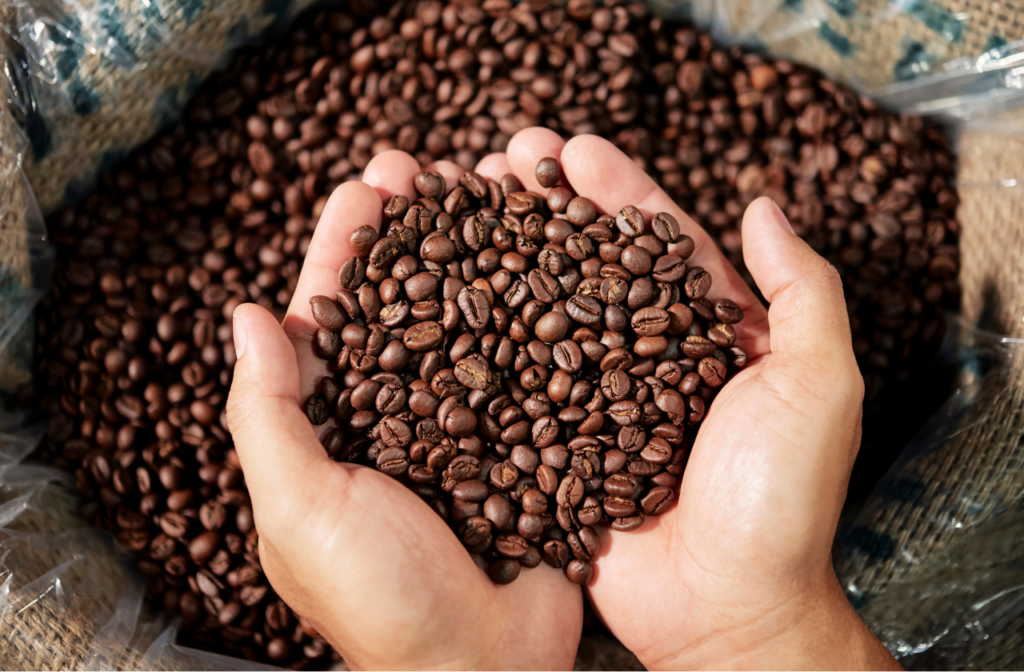
Not all coffee beans are created equal when it comes to espresso. Beans used for espresso are often roasted longer, resulting in a darker roast that brings out a richer, more robust flavor profile suitable for the concentrated nature of espresso.
Common choices include Arabica and Robusta beans, or a blend of the two, each contributing unique flavors and characteristics to the final shot.
11. Freshness of Coffee Beans is Vital for Espresso Quality
The quality of an espresso is deeply influenced by the freshness of the coffee beans used. Freshly roasted beans are paramount in achieving the full spectrum of flavors and aromas inherent in espresso.
Beans should ideally be used within two weeks of roasting to ensure the best taste. The freshness impacts the crema produced, as well as the overall sensory experience of the espresso, from its aroma to its aftertaste.
12. Single-Origin and Blend Beans Offer Different Espresso Flavors
The choice between single-origin beans and blended beans can significantly affect the espresso’s flavor profile. Single-origin beans, sourced from one location, offer unique and distinct tastes, reflecting their specific growing conditions.
Blends, on the other hand, are crafted to achieve a balance and consistency of flavor, combining beans from different regions to create a complex and harmonious taste.
13. Espresso Has a Rich History and a Bright Future
Espresso boasts a rich history and a promising future. Originating in Italy, it has become a global phenomenon, continually adapting to changing tastes and technologies. The future of espresso looks bright, with ongoing innovations in brewing techniques, bean cultivation, and sustainable practices promising to further enrich the espresso experience.
14. The Roast Level of Beans Affects Espresso Taste
The roast level of the beans is a crucial factor in determining the taste of espresso. Lighter roasts tend to bring out more of the bean’s original flavor, including brighter, acidic notes.
Darker roasts, favored for espresso, typically have a richer, more intense flavor, with a pronounced bitterness that complements the espresso’s strength and body.
15. There Are Many Renowned Espresso Blends Worldwide
Around the world, there are numerous renowned espresso blends, each with a unique flavor profile. For example, Italian blends often feature a well-balanced and robust flavor, while Latin American blends might highlight smoother, chocolatey notes. These blends are crafted to create a consistent taste that espresso aficionados have come to love and expect.
16. Espresso Extraction is Both Science and Art
Extracting espresso is a process that combines science and art. It involves a precise balance of factors like grind size, water temperature, and pressure.
The skill of the barista also plays a critical role, as they must adjust these variables to achieve the perfect extraction, which ideally results in a rich, complex, and well-balanced shot of espresso.
17. Grind Size is Critical for Espresso Quality
The grind size of the coffee is a critical factor in espresso quality. For espresso, the coffee should be finely ground to ensure the right level of resistance to water pressure, allowing for optimal extraction of flavor.
If the grind is too coarse, the espresso will be under-extracted and weak; too fine, and it risks being over-extracted and bitter.
18. Proper Tamping is Key to Consistent Espresso Shots
Tamping, the process of compressing the coffee grounds in the portafilter, is essential for consistent espresso shots. It needs to be done evenly and with the right amount of pressure to ensure a uniform extraction.
Inconsistent tamping can lead to channeling, where water passes through the coffee unevenly, resulting in a shot that’s imbalanced and subpar in taste.
19. Timing and Volume Are Crucial for the Perfect Espresso Shot
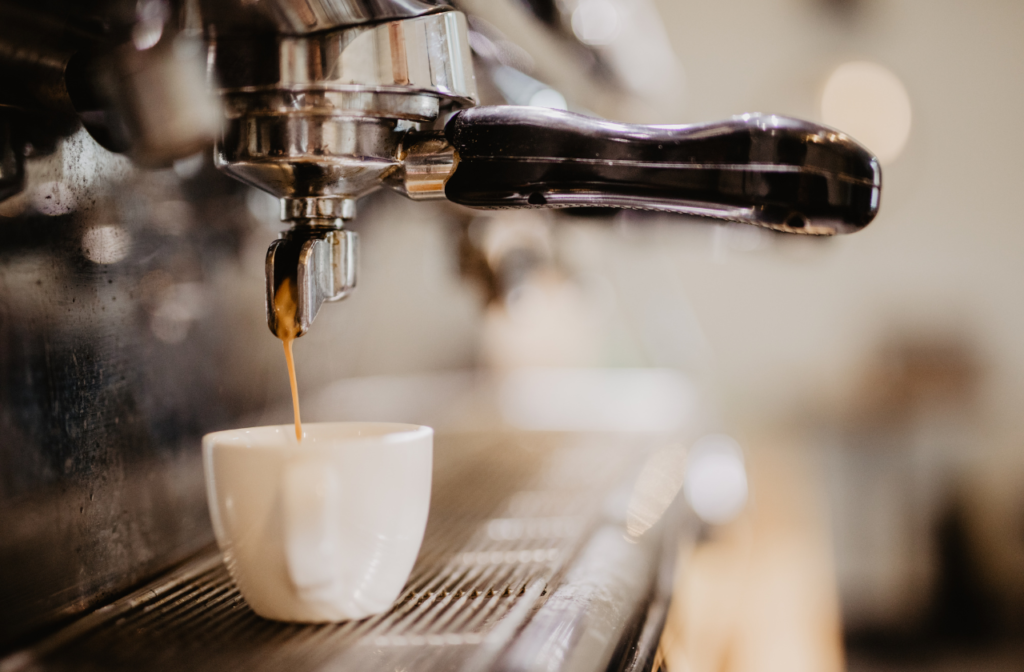
The timing and volume of water passed through the coffee directly impact the quality of an espresso shot. A typical shot of espresso is brewed in about 25-30 seconds and yields about 25-30 milliliters of liquid. This precise timing and volume are crucial for extracting the full range of flavors without over-extracting, which can lead to bitterness.
20. Common Espresso Brewing Problems Can Be Easily Troubleshooted
Common espresso brewing problems, such as bitterness, sourness, or weak flavor, can often be easily troubleshooted. Bitterness might indicate over-extraction or a too-fine grind, while sourness may result from under-extraction or a too-coarse grind. Addressing these issues often involves adjusting the grind size, tamping pressure, or extraction time.
21. Espresso is a Central Part of Italian Culture
In Italy, espresso is not just a coffee; it’s an integral part of the culture and daily life. Espresso bars are ubiquitous, serving as social hubs where people gather for quick, standing coffee breaks throughout the day.
This tradition reflects the Italian lifestyle’s emphasis on leisure, conversation, and the enjoyment of life’s simple pleasures.
22. Espresso Consumption Varies Across Cultures
Espresso consumption around the world varies significantly, reflecting diverse cultural practices and preferences. In countries like Italy, espresso is often enjoyed quickly and standing up, usually without any added sugar or milk.
In contrast, in the United States, it forms the base of larger, milk-based drinks like lattes and cappuccinos. Other regions have their unique takes, integrating local flavors and traditions, demonstrating espresso’s versatile appeal across different cultures.
23. Espresso’s Popularity in the United States is Rising
In the United States, espresso has seen a surge in popularity, particularly as the core ingredient in a variety of specialty coffee drinks. This trend has been driven by the proliferation of coffee shops and the growing interest in gourmet coffee experiences.
American consumers often prefer espresso-based drinks like lattes, mochas, and macchiatos, which combine the intensity of espresso with other flavors and textures.
24. Espresso Forms the Base of Many Popular Coffee Drinks
Espresso is the foundation of numerous popular coffee drinks, each offering a unique taste experience. The latte combines espresso with steamed milk for a creamy, smooth flavor, while the cappuccino offers a richer texture with equal parts of espresso, steamed milk, and milk foam.
The Americano, made by adding hot water to espresso, provides a milder flavor more akin to traditional brewed coffee.
25. Espresso is Widely Used in Cooking and Baking
Beyond being a beloved beverage, espresso is also a popular ingredient in cooking and baking. Its robust flavor enhances various recipes, from savory dishes to desserts.
Espresso is often used in rich chocolate cakes, tiramisu, and even as a rub for meats, adding a depth of flavor that complements and intensifies the primary ingredients.
26. Espresso is a Key Ingredient in Many Modern Cocktails
Espresso’s rich flavor profile has made it a favorite ingredient in the world of mixology. The espresso martini, combining vodka, coffee liqueur, and a shot of espresso, is a classic example.
Its unique taste and caffeine kick makes it a popular choice for an after-dinner or energizing cocktail, showcasing espresso’s versatility beyond the coffee cup.
27. Drinking Espresso Has Several Health Benefits
Moderate consumption of espresso offers several health benefits. Studies have shown that it can enhance mental alertness, improve mood, and may even reduce the risk of certain diseases like type 2 diabetes and Alzheimer’s.
Espresso’s antioxidants also contribute to overall health, though it’s important to consume it in moderation due to its caffeine content.
28. Espresso Contains Less Caffeine Than Often Thought
Contrary to popular belief, espresso contains less caffeine per serving than regular brewed coffee. While espresso is more concentrated, its serving size is much smaller, resulting in a lower total caffeine content. This makes it an excellent choice for those seeking the rich flavor of coffee but wanting to moderate their caffeine intake.
29. Sustainable Espresso Production is Becoming More Important
The coffee industry, including espresso production, is increasingly focusing on sustainability. This includes practices like ethical sourcing, where beans are purchased from farmers at a fair price, and environmental considerations, such as reducing the carbon footprint of coffee production and packaging. Sustainable practices ensure the long-term viability of coffee farming and the health of the planet.
30. Innovations Are Shaping the Future of Espresso
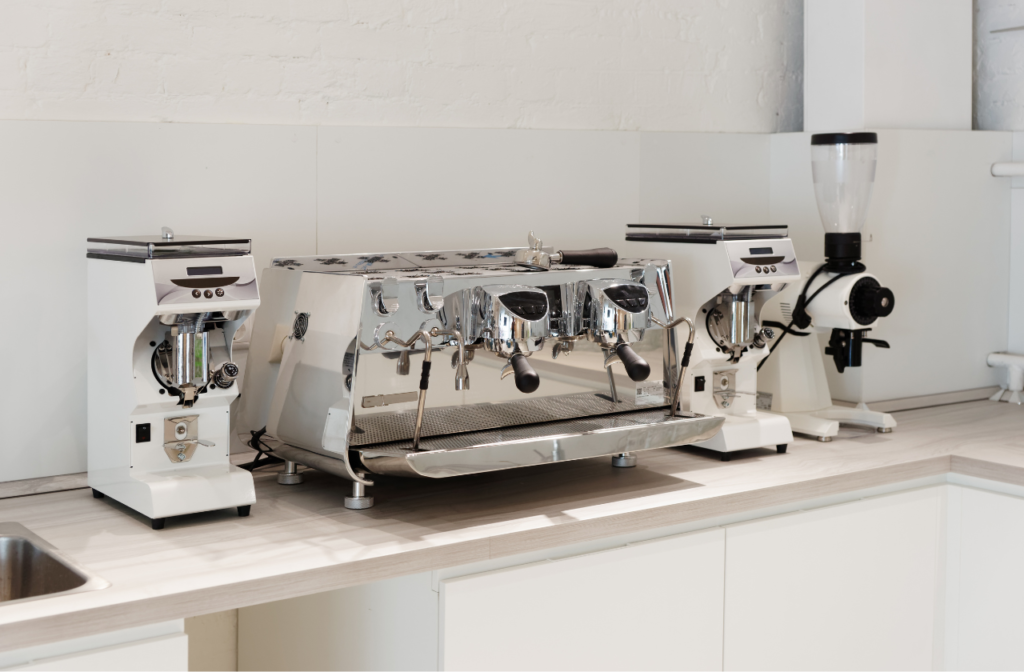
The world of espresso is constantly evolving, with innovations shaping its future. These include advancements in machine technology for more precise brewing, development of new coffee bean varieties, and even experiments with coffee growing techniques.
Additionally, the rise of smart and connected espresso machines allows for a more customized and convenient brewing experience.
31. Espresso Tasting Involves Identifying Distinct Flavors and Aromas
Espresso tasting, much like wine tasting, involves identifying various flavors and aromas. Connoisseurs assess espresso based on criteria such as body, acidity, sweetness, bitterness, and overall balance.
Tasting can reveal a range of flavors from fruity and floral to spicy and nutty, depending on the beans and the brewing method used, making each espresso experience unique.
32. Choosing the Right Home Espresso Machine is Crucial
Selecting the right espresso machine for home use is essential to replicate the quality of a coffee shop experience. Factors like the machine’s pressure capability, temperature control, and durability play a pivotal role in its performance.
Home baristas should also consider ease of use and maintenance, as well as the machine’s size and aesthetic appeal. The choice between manual, semi-automatic, and fully automatic machines depends on the user’s preference for control versus convenience.
33. Latte Art is an Artistic Expression in Espresso Making
Latte art, the practice of creating designs on the surface of lattes and other milk-based espresso drinks, has become a popular form of artistic expression among baristas. It involves pouring steamed milk into espresso in a way that forms patterns such as hearts, rosettas, or more intricate designs.
Latte art is not only aesthetically pleasing but also an indicator of a well-made drink, showcasing the barista’s skill in milk texturing and espresso extraction.
34. Espresso Features Prominently in Literature and Film
Espresso has made significant appearances in literature and film, often used as a symbol of sophistication, a catalyst for social interaction, or a comforting ritual. In movies, the presence of an espresso cup can set a scene in a café or depict characters’ lifestyle and tastes.
In literature, descriptions of espresso drinking can add authenticity to settings and characters, reflecting its cultural significance.
35. Many Famous Personalities Are Known for Their Love of Espresso
Numerous famous personalities, from writers and artists to actors and politicians, are known for their love of espresso. This admiration reflects espresso’s appeal across a broad spectrum of society and its association with creativity, energy, and a discerning palate.
The beverage’s popularity among influential figures helps reinforce its status as a globally appreciated and iconic drink.
36. Espresso Festivals and Competitions Celebrate Coffee Culture
Espresso festivals and barista competitions are key events in the coffee world, celebrating the art and science of espresso. These events provide platforms for showcasing skill, innovation, and excellence in espresso preparation and presentation.
Competitions like the World Barista Championship highlight the precision and creativity involved in making the perfect cup, while festivals bring enthusiasts and professionals together to share their passion for espresso.
37. Espresso Bars Are Important Social Gathering Places
Espresso bars serve as crucial social gathering places in many cultures. They are not just venues for enjoying coffee but also spaces for community interaction, intellectual discussion, and relaxation.
In countries like Italy, they are deeply ingrained in the social fabric, playing a significant role in daily life. The espresso bar’s atmosphere, from its layout to the barista’s role, fosters a sense of belonging and community.
38. Certain Foods Pair Exceptionally Well with Espresso
Food pairing with espresso can enhance the overall gastronomic experience. Rich, sweet items like chocolate or tiramisu complement the bold flavors of espresso, while the acidity of espresso pairs well with creamy or fatty foods, cutting through the richness.
Savory options like aged cheeses or cured meats can also create delightful contrasts, making espresso a versatile companion for a range of foods.
39. Espresso Reflects a Lifestyle and Philosophical Choice
Choosing espresso can be reflective of a lifestyle or philosophical choice, symbolizing an appreciation for the finer things in life, a penchant for tradition, or a preference for intensity and depth in both flavor and experiences.
For many, the ritual of preparing and enjoying an espresso offers a moment of pause and indulgence in a fast-paced world, embodying a conscious choice to savor life’s small pleasures.
40. Technology Plays a Big Role in Modern Espresso Culture
Technology significantly influences modern espresso culture, from advanced espresso machines to apps that enhance the coffee experience. Innovations in machine technology allow for greater precision in brewing, while apps provide convenience in ordering and learning about coffee.
The digital age has also fostered online communities where coffee enthusiasts can share tips, reviews, and their passion for espresso.
41. Espresso Education is Available Through Various Workshops

Espresso education has become more accessible, with a range of workshops and courses available for both professionals and enthusiasts. These programs cover topics like brewing techniques, bean selection, and the science behind espresso.
Such education helps in elevating the overall quality of espresso preparation and appreciation, fostering a deeper understanding and enjoyment of this beloved beverage.
42. Choosing the Right Home Espresso Machine is Crucial
Selecting the right espresso machine for home use is essential to replicate the quality of a coffee shop experience. Factors like the machine’s pressure capability, temperature control, and durability play a pivotal role in its performance.
Home baristas should also consider ease of use and maintenance, as well as the machine’s size and aesthetic appeal. The choice between manual, semi-automatic, and fully automatic machines depends on the user’s preference for control versus convenience.
43. Latte Art is an Artistic Expression in Espresso Making
Latte art, the practice of creating designs on the surface of lattes and other milk-based espresso drinks, has become a popular form of artistic expression among baristas. It involves pouring steamed milk into espresso in a way that forms patterns such as hearts, rosettas, or more intricate designs.
Latte art is not only aesthetically pleasing but also an indicator of a well-made drink, showcasing the barista’s skill in milk texturing and espresso extraction.
44. Espresso Features Prominently in Literature and Film
Espresso has made significant appearances in literature and film, often used as a symbol of sophistication, a catalyst for social interaction, or a comforting ritual. In movies, the presence of an espresso cup can set a scene in a café or depict characters’ lifestyle and tastes.
In literature, descriptions of espresso drinking can add authenticity to settings and characters, reflecting its cultural significance.
45. Many Famous Personalities Are Known for Their Love of Espresso
Numerous famous personalities, from writers and artists to actors and politicians, are known for their love of espresso. This admiration reflects espresso’s appeal across a broad spectrum of society and its association with creativity, energy, and a discerning palate.
The beverage’s popularity among influential figures helps reinforce its status as a globally appreciated and iconic drink.
46. Espresso Festivals and Competitions Celebrate Coffee Culture
Espresso festivals and barista competitions are key events in the coffee world, celebrating the art and science of espresso. These events provide platforms for showcasing skill, innovation, and excellence in espresso preparation and presentation.
Competitions like the World Barista Championship highlight the precision and creativity involved in making the perfect cup, while festivals bring enthusiasts and professionals together to share their passion for espresso.
47. Espresso Bars Are Important Social Gathering Places
Espresso bars serve as crucial social gathering places in many cultures. They are not just venues for enjoying coffee but also spaces for community interaction, intellectual discussion, and relaxation.
In countries like Italy, they are deeply ingrained in the social fabric, playing a significant role in daily life. The espresso bar’s atmosphere, from its layout to the barista’s role, fosters a sense of belonging and community.
48. Espresso Paves the Way for Environmental Innovation in Coffee Production
The espresso industry is at the forefront of environmental innovation in coffee production. With an increasing focus on sustainability, manufacturers and producers are exploring eco-friendly practices, such as reducing water usage, implementing recycling programs, and using renewable energy sources in production and brewing processes.
These initiatives not only aim to minimize the environmental footprint of espresso production but also set a precedent for sustainability in the broader coffee industry.
49. Certain Foods Pair Exceptionally Well with Espresso
Food pairing with espresso can enhance the overall gastronomic experience. Rich, sweet items like chocolate or tiramisu complement the bold flavors of espresso, while the acidity of espresso pairs well with creamy or fatty foods, cutting through the richness.
Savory options like aged cheeses or cured meats can also create delightful contrasts, making espresso a versatile companion for a range of foods.
50. Espresso Reflects a Lifestyle and Philosophical Choice
Choosing espresso can be reflective of a lifestyle or philosophical choice, symbolizing an appreciation for the finer things in life, a penchant for tradition, or a preference for intensity and depth in both flavor and experiences.
For many, the ritual of preparing and enjoying an espresso offers a moment of pause and indulgence in a fast-paced world, embodying a conscious choice to savor life’s small pleasures.
51. Technology Plays a Big Role in Modern Espresso Culture
Technology significantly influences modern espresso culture, from advanced espresso machines to apps that enhance the coffee experience. Innovations in machine technology allow for greater precision in brewing, while apps provide convenience in ordering and learning about coffee.
The digital age has also fostered online communities where coffee enthusiasts can share tips, reviews, and their passion for espresso.
52. Espresso Education is Available Through Various Workshops
Espresso education has become more accessible, with a range of workshops and courses available for both professionals and enthusiasts. These programs cover topics like brewing techniques, bean selection, and the science behind espresso.
Such education helps in elevating the overall quality of espresso preparation and appreciation, fostering a deeper understanding and enjoyment of this beloved beverage.
53. Barista Skills Are Essential for Crafting Quality Espresso
Mastering barista skills is essential for crafting high-quality espresso. This involves understanding the nuances of different coffee beans, the precise mechanics of espresso machines, and the art of milk steaming and pouring for drinks like lattes and cappuccinos.
Professional baristas undergo extensive training to perfect these skills, ensuring each cup of espresso they serve meets high standards of flavor, aroma, and presentation.
54. Espresso Production Has an Environmental Impact
The production of espresso has a notable environmental impact, from the cultivation of coffee beans to the energy used in brewing. Coffee farming can contribute to deforestation and loss of biodiversity if not managed sustainably.
Additionally, the energy consumption of espresso machines and the waste generated by coffee pods and packaging are growing concerns. Addressing these issues is crucial for the future sustainability of the espresso industry.
55. Farming Innovations Are Improving Espresso Bean Quality
Innovations in coffee farming are continually improving the quality of espresso beans. Techniques such as shade-growing, organic farming, and careful varietal selection contribute to the development of richer, more complex flavors in coffee beans.
These advances not only enhance the taste of espresso but also help in making coffee farming more sustainable and beneficial for the environment.
56. Fair Trade Practices Are Vital in the Espresso Industry
Fair trade practices are increasingly important in the espresso industry. They ensure that coffee farmers receive a fair price for their beans, contributing to better livelihoods and community development.
Fair trade also promotes sustainable farming practices, which are crucial for the long-term health of the coffee industry and the environment.
57. Brand Packaging and Marketing Trends Influence Espresso Sales
The packaging and marketing of espresso brands play a significant role in influencing consumer preferences and sales. Innovative packaging that preserves freshness and enhances convenience, along with effective marketing strategies that emphasize quality, sustainability, or the unique characteristics of the blend, can significantly impact a brand’s appeal and market success.
58. Espresso Consumption in the Workplace is Increasing
Espresso consumption in the workplace is on the rise, reflecting a growing appreciation for high-quality coffee during the workday.
Companies are increasingly investing in quality coffee machines and offering a variety of espresso-based options to employees. This trend not only enhances the workplace experience but also contributes to increased productivity and employee satisfaction.
59. DIY Techniques Enable Quality Espresso Brewing at Home
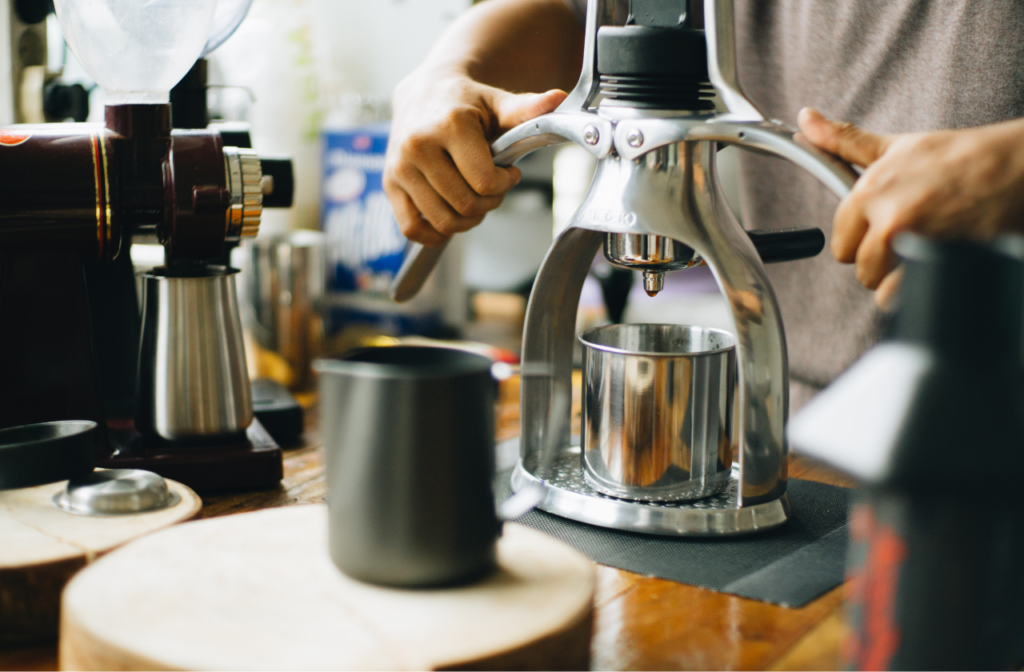
DIY techniques and home espresso machines have made it easier for enthusiasts to brew quality espresso in their own kitchens.
With the right equipment and some practice, coffee lovers can experiment with different beans, grind sizes, and brewing techniques to create a personalized espresso experience. This trend has democratized the art of espresso, making it more accessible to a wider audience.
60. The Espresso Industry Continues to Evolve with New Trends
The espresso industry is continuously evolving, with new trends emerging regularly. These include the growing popularity of specialty and single-origin coffees, the integration of technology in brewing equipment, and a heightened focus on sustainability and ethical sourcing.
These trends reflect changing consumer preferences and a deepening appreciation for the complexity and variety of espresso.
Conclusion
Espresso, more than just a beverage, is a cultural icon, representing a blend of tradition, innovation, and passion. Its journey from a simple Italian drink to a global phenomenon encapsulates a story of artistry, science, and cultural evolution.
As we look to the future, espresso continues to offer a rich tapestry of experiences, flavors, and stories, inviting us to savor each cup as a unique and cherished moment.
